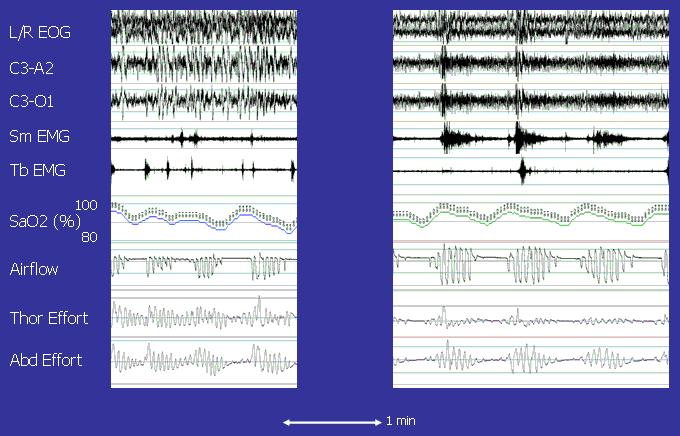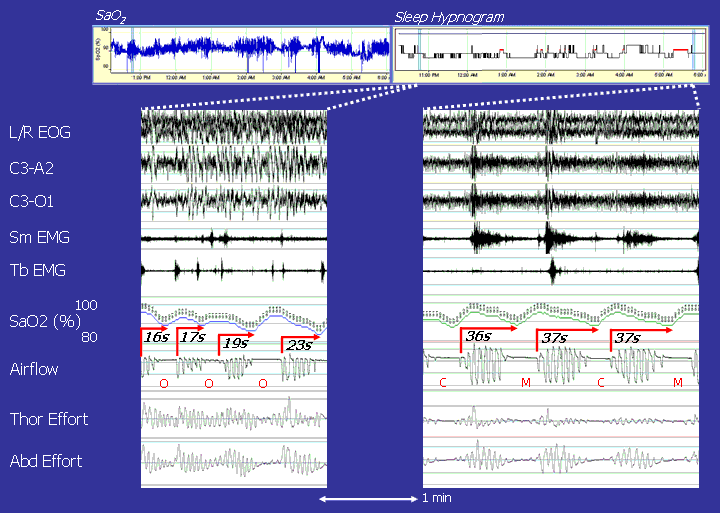Contributed by Alan R. Schwartz, MD
A 69M presented with loud snoring, sleep disruption and daytime sleepiness. This slide illustrates two polysomnographic segments from the same night in this patient. How would you characterize the sleep disordered breathing patterns in each slide, and how would you account for any differences in these patterns?
The patient had loud snoring, sleep disruption and daytime sleepiness. He also had a history of atrial fibrillation and well compensated heart failure, a moderately dilated left ventricle and evidence for volume overload (peripheral edema) on exam. These recordings demonstrate predominantly obstructive apneas (O) at the start of the night (L panel), and mixed (M) and central (C) apneas at the end of the night (R panel). This shift is associated with a prolongation in circulation time (see red arrows).
The switch to Cheyne Stokes breathing patterns patterns is likely related to the finding that the circulation time lengthened over the course of the night (see Figure). The circulation time (CT) is estimated by measuring the time between apnea termination and the SaO2 nadir. It is determined by the circulating blood volume (Volume) and cardiac output (CO, Volume/time) as described by the following relationship:
CT = Volume/CO = Volume/(Volume/time) = time!
The circulation time is normally less than 20 seconds. Increases in central blood volume and/or reductions in cardiac output lead to a prolongation of circulation time. Increases in the circulation time cause feedback delay between the lungs and carotid chemoreceptors. When the circulation time in prolonged, it will take longer for ventilatory disturbances in the lungs to be sensed by the chemoreceptors. This delay leads to over- and undershooting of ventilation, and a periodic breathing pattern of the central or Cheyne-Stokes type.
In this patient, the increase in circulation time may have been related to an increase in the central circulating blood volume as volume shifted from the periphery to central circulation over the course of the night. This shift may be related to recumbency and/or cardiac decompensation from hemodynamic loads imposed by obstructive apneas (in the first portion of the night).
Take home points about the circulation time:
- It reflects volume status and cardiac function.
- It relates to the propensity toward central sleep apnea and Cheyne Stokes breathing patterns.
- When prolonged, it suggests that cardiac and sleep apnea management be optimized.
A post-script: Our patient responded to CPAP with relief of sleep disordered breathing patterns and related symptoms, and with improvement in volume status.
References
- Tkacova R, Niroumand M, Lorenzi-Filho G, Bradley TD. Overnight shift from obstructive to central apneas in patients with heart failure: role of PCO2 and circulatory delay. Circulation 2001;103:238-243.
- Tkacova R, Wang H, Bradley TD. Night to night alterations in sleep apnea type in patients with heart failure. J Sleep Res. 2006;15:321-8.





